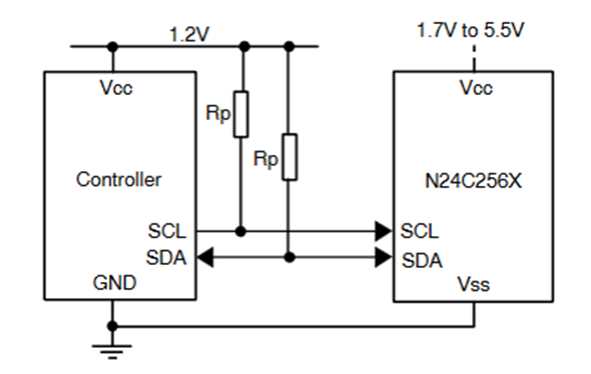EEPROMs (Electrically Erasable Programmable Read-Only Memories) are non-volatile memory chips used in a wide range of applications due to their ability to store data even without power and to be reprogrammed electronically. Often, they will be used to store information that is critical to the operation of the device, including information that may be updated from time to time.
This could include firmware or configuration data for the system itself, or user configurations and preferences.
By using an EEPROM instead of RAM of Flash memory, you eliminate the need for a coin battery or standby voltage rail to maintain data.
The usefulness of EEPROMs in providing safe, non-volatile retention of data means that there are few application sectors they are not found in. They are commonly used in embedded systems, consumer electronics, automotive, industrial, medical, energy and many more.
onsemi is a significant player in non-volatile memory – especially devices for challenging applications in harsh environments. In fact, onsemi has over three decades of experience in this area and are one of the top 3 EEPROM suppliers globally.
In order to maintain a leadership position, onsemi continually develops new devices in their EEPROM portfolio, ensuring that they are matched to the microprocessors they inevitably work in partnership with.
Clearly the operating voltages of interfaces are important, and as voltages reduce elsewhere in the circuit, EEPROMs need to mirror these changes.
System Compatibility
For example, the latest N24C256X EEPROM from onsemi is unique in offering an I2C interface where the serial data line (SDL) and serial clock line (SDA) are designed to operate at just 1.2V. This capability is essential for modern low-power applications, delivering multiple advantages in the areas of power efficiency, compatibility, and performance.
Energy Efficiency
Energy efficiency is an important aspect of almost every modern design, especially those that are powered by tiny batteries or energy harvesting. The ability of the N24C256X EEPROM to operate at low voltages reduces the overall power consumption of the device. In standby mode, the device consumes 2 mA or less for full Vcc range and full temperature range.
Until the N24C256X became available, it was necessary to introduce additional circuitry in the form of voltage level shifters to allow older EEPROMs to work with state-of-the-art 1.2V microprocessors.
Signal Integrity
In any system, signal integrity is a concern. When working with EEPROMs, this concern is even more important as noise can cause data corruption which would lead to erroneous operation of the system when this data is read back.
In modern densely packed designs, there can be significant electromagnetic interference (EMI) and / or crosstalk between adjacent signal lines, as well as noise from supply lines. However, reducing the voltage levels lessens the likelihood that noise will be able to affect signal integrity. Therefore, the signal integrity of the N24C256X will be better than other EEPROMs that operate from higher voltages.
Cost Effectiveness
As the N24C256X is directly compatible with low-voltage systems, there is no need to include voltage regulators and level shifters within the schematic. As these devices cannot be 100% efficient, eliminating them boosts overall system efficiency. It also allows for a more compact footprint and reduced bill of materials (BoM) which ultimately delivers a lower-cost solution.
The N24C256X in detail
The N24C256X is a 256 kb serial CMOS EEPROM, internally organized as 32,768 words, each comprising 8 bits and featuring a 64-byte page write buffer. It is capable of operating from any supply rail in the range 1.7 V to 5.5 V, providing compatibility with a wide range of applications.
The SCL and SDA lines within the I2C interface are referenced to 1.2V. Additionally, they both benefit from inbuilt Schmitt triggers and noise suppression filters, thereby ensuring high levels of signal integrity for all data transferred to or from the EEPROM.
Three I2C modes are supported – Standard (100 kHz), Fast (400 kHz) and Fast-Plus (1 MHz).
User programmable permanent write protection provides hardware protection for the memory array.
Reliability is crucial and the N24C256X is rated for one million program / erase cycles and is capable of retaining data for 100 years.
As the N24C256X is intended for use in harsh industrial environments, the temperature range is extended beyond the normal industrial range, allowing operation in an ambient between -40°C and +125°C.
Conclusion
EEPROMs are an essential part of many electronic systems allowing important data such as firmware, configurations and user settings to be stored, even in the absence of power.
The new N24C256X is unique in offering a 1.2 V I2C bus interface, allowing direct compatibility with modern microprocessor voltages. This reduces component count and space requirements as well as lowering energy consumption and decreasing the likelihood of noise impacting signal integrity.
Learn more about the N24C256X.

